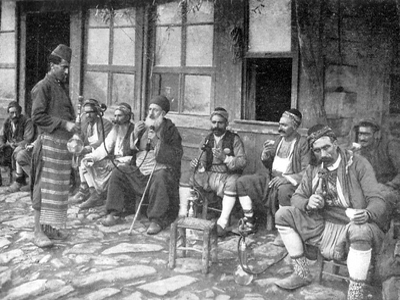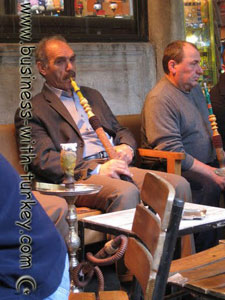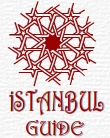Narghile
The Origin of Narghile
Several hypotheses on the birthplace of narghile must be taken into
account.They concern Europe, America, India, Persia and Africa. Those
who try hard to write the official history of tobacco mention an American
origin and a European origin for the transmission of its use modes,
as the common pipe, the chibouque or even narghile. Such an argument
states that the Europeans would have taught Asian and African peoples
how to smoke, particularly through the pipe. A consequence is that
cannabis would have been inhaled, neither in Europe, nor in Africa,
nor anywhere else, before the arrival of tobacco.

The Narghile
A water-pipe consists of various parts: The body, bowl,
tube and mouthpiece:
|
Body: This is the part where the bowl is placed.It looks
like a decanter. It is filled with water. This water cleans the
soot belched out by the burning tobacco and also to absorb the
nicotine.Though the body is usually made of glass or metal, you
could find more elegant ones made out of porcelain with gold,
silver or colorful paintings.
Bowl: Tobacco is put in the bowl which is pierced and
covered with a conical cap in order that the flame be sheltered
on windy days.
Tube: This is the tube where the smoke goes throught.
There may be more than one tube so that two or more people can
smoke together while chatting.
Mouthpiece: put at the end of the tube to smoke. |
Narghile Tobacco
The tobacco takes
two or even three main forms. The first one is the mu'essel and literally
means "honeyed", named so because of its ingredients like treacle (molasses)
or honey used as agglutinant bonds. Treacle (molasses) is a sugar by-product.
The second form is "tumbâk" which is pure tobacco. "Jurâk", mainly of
Indian origin, can be considered as an intermediate substance among
both first ones. It is very appreciated in the Arabian peninsula. Fruits
and oils would be some of its ingredients.
Narghile in society
Narghile is popular as well as with men as with women (but mostly smoked
in Turkey by men), as well as with young people as with their elders.
Indeed, it symbolizes conviviality, serenity and harmony. Narghile is
something to be smoke in groups. Narghile smokers smoke in group to let
conversation naturally take place among them. Narghile has a collective
form practice even if it is sometimes individual.
|
Narghile in Turkey
Water-pipes was brought to Anatolia in the 17th century. Today,
Turkey is not any more that country where Pierre Loti, a great
amateur of narghiles used to live. Today, those places fitted
out to devote to this art, called "narghile bars", can be listed
on one's fingers. Most of the famous cafés where the peculiar
narghile atmosphere prevailed actually disappeared. But there
are still some districts where the "survivors" are to be found
in Istanbul: around the Grand Bazaar, in some tourist spots and
in some specific districts of Istanbul. The narghile bars are
surrounded with the smell of various narghile tobaccos (rose,
mint, orange,etc.). While smoking, people would enjoy also a Turkish
Tea or Turkish Coffee
and would also play backgammon or cards. Tourist usually love
the Turkish Apple Tea. No
alcohol drink is served. Tourists are welcome and they would try
to smoke narghile and enjoy the atmosphere of the coffee shop.
|
Narghile at the Ottoman Empire
Social frontiers gave to some travelers the illusion of "class-less"
societies in the Ottoman Empire. Nevertheless, one should know that
this last one was extremely divided, according to social, professional
or religious memberships. Such a social promiscuity even worried political
and religious authorities. Moreover, their fears led to disastrous episodes
of ban on cafés, coffee and tobacco by Sultan Murad IV who wanted this
way to put an end to the transgression of limits between social groups.

Narghile in the world
Narghile is still used in various countries around the globe such as
Lebanon, Syria, Jordan, Greece, Egypt, Libya, Tunisia, Yemen, Iran,
India, Afghanistan and China. In some of those countries narghile is
more popular than in Turkey. Syria has a prosperous narghile industry
which exports to many countries of the region an impressive variety
of water vessels and other essential elements of the artifact. Today
in Egypt, more than in any other, the narghile makes an exhibition of
itself almost everywhere and in every place. An interesting question
is to know if the powerful film production of this country, massively
broadcast on the regional scale, has been in a position to influence
smoking behaviors in other countries. Such behaviors would have been
at the origin of a revival of narghile as in Tunisia, Syria, Lebanon
or Jordan.
In current modern Iran, the narghile life-style continues. For instance,
in Darban, a small town in the South of Teheran, women, alone or accompanied
with their husband or mother, find the road of traditional tea-houses,
in an atmosphere of holiday resort, delicious: sat down on a carpet,
drink tea, eat sun flower seads, smoke a narghile and chat. India was
known with the historic use of hookah. Narghile was in 1840, very common
during dinners, at officers' tables, and its typical gurgling could
be heard till late in the night. Old Indians even kept this custom when
traveling abroad. The Chinese narghile has a very peculiar shape: it
looks like a big and generally decorated lighter. Its little bowl is
designed to embed tiny balls of tobacco smoked in two or three drafts.
Articles' Index
Hope you enjoyed our article!
Thank you for visiting our site !
Please write your suggestion for an article to : istanbul gmx.co.uk gmx.co.uk
PRIVATE GUIDE
IN ISTANBUL

|
|








